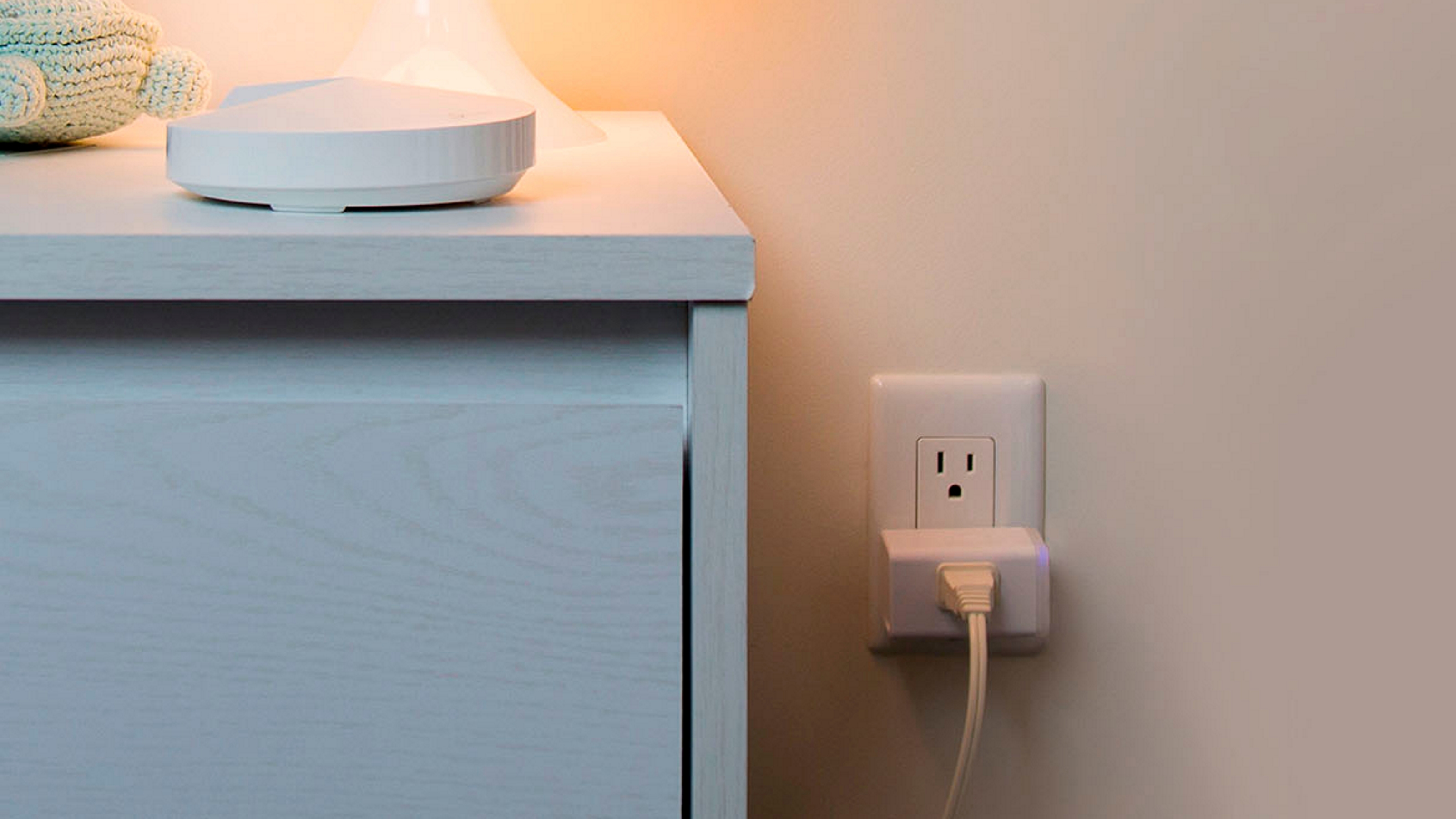Do smart plugs save electricity? 5 genius uses that will save on your energy bills
When used correctly, smart plugs can slash your energy bills


Do smart plugs save electricity? With the price of energy on the rise, many will be considering any way to save money on their bills. Smart plug are known somewhat for their energy-saving credentials, but not as much as their smart home usefulness. So what's the truth behind whether they save electricity?
The answer is a big ‘yes’, though one with a ‘but’. That ‘but’ is to note that smart plugs themselves consume energy to run, because they need a constant WiFi connection in order to spring into action should you want to remotely warm up your heated blanket, say. That said, the cost should be far less than what they save with some clever usage, making smart plugs a clever way to save energy if used correctly.

Alan is one of Livingetc's tech experts, with endless experience testing and writing about the latest smart tech. Given the energy crisis, we tasked him with answering whether smart plugs can actually save on your bills. Here he explains how to use them to do so.
How much does a smart plug cost to run?
Crucially, they’re pretty efficient in the greater scheme of things, using less than a watt of energy per hour when dormant and hitting slightly more when actively in use. In other words, you’re only looking at around 8.76 kWh over a year, so even with recent price rising you’re not looking at much over a dollar per smart plug.
Of course, you also have to pay for the smart plug itself, but considering a pack of four will cost you around $20 to $30, it will still likely pay for itself in the long run if you have appliances ramping up your energy bills each month.
How much energy could a smart plug save?
Let’s take a very basic use for a smartplug: turning off the juice overnight when you’re not using something. An Echo Show 5, for example, uses around 2.5 to 3.5 watts per hour when nobody is around to ask it questions.
If you programmed a smart plug to switch off between the hours of 11pm and 7am (say), you’d already be saving more energy than the smart plug costs to run. And these savings would be greater on devices that drain more power when not in use.
5 ways smart plugs can save you money
The ability to cut power to energy hungry devices when you’re asleep isn’t the only way smart plugs can save you money, of course. Here are some other ways to look after the dollars and cents.
1. Cut vampire drain
Vampire drain — sometimes known as phantom drain — is the passive draw of electricity that devices use when left plugged in, even when switched off. This is nowhere near as much electricity as the device will draw when in use, but when you have a lot of devices doing it, it really adds up. Indeed, the NRDC reckons it can amount to as much as 20% of your household energy total.
Smart plugs can be scheduled to turn off devices at times when you’re not around: during working hours if you head to the office, or at night when you won’t need them.
2. Turn things off remotely
Smart plugs aren’t just for automation, of course. As they’re connected to a smartphone app, you can control them from anywhere in the world.
That means that forgetting to turn things off when you leave for work is a thing of the past, as you can just flick them off from your phone. If you’re particularly forgetful, you may find the savings from this add up quite quickly!
3. Track your energy usage
If you want a greater insight into how much any given appliance might be costing you, some of the best smart plugs — such as Sonoff’s S40 plugs, available from Amazon — can tell you the energy being drawn from the connected device to save you the guesswork.
That’ll not only let you figure out the main offenders that need power management without needing to track down a user manual, but give you general insights as to what bit of your home is costing you the most from month to month, helping you plan a bit more carefully.
4. Take advantage of off-peak energy times
Some power plans have cheaper electricity at off-peak hours, and smart plugs can be used to force habits — only providing power during the low-cost times, for example.
This could force you to only do laundry when it’s cheaper, sure — but you can think bigger than that. If you have an electric car, you could only enable power to come through when electricity is cheaper, for example.
5. Go further with IFTTT
If you want to get really clever with the smart plug electricity saving and aren’t afraid of getting your hands dirty, then IFTT can help you save every last cent and enjoy some true smart home automation.
IFTT (“If This, Then That”) is software that links one functionality to another. So in the last example, you could set your electric car charger to switch on during sunny days, when your solar panels are benefiting from the sun’s rays!
At the same time, you could make it so that certain temperatures automatically turn off the heater or air conditioning so you’re not wasting energy when not required. You could even hook devices up to a smart motion sensor so that they automatically switch off when nobody is in the room.
Be The First To Know
The Livingetc newsletters are your inside source for what’s shaping interiors now - and what’s next. Discover trend forecasts, smart style ideas, and curated shopping inspiration that brings design to life. Subscribe today and stay ahead of the curve.

Freelance contributor Alan has been writing about tech for over a decade, covering phones, drones and everything in between. Previously Deputy Editor of tech site Alphr, his words are found all over the web and in the occasional magazine too. He often writes for T3 and Tom's Guide. When not weighing up the pros and cons of the latest smartwatch, you'll probably find him tackling his ever-growing games backlog. Or, more likely, playing Spelunky for the millionth time.
-
 The 'New British' Style? This Victorian London Home Embraces Its Owners' Global Background
The 'New British' Style? This Victorian London Home Embraces Its Owners' Global BackgroundWarm timber details, confident color pops, and an uninterrupted connection to the garden are the hallmarks of this relaxed yet design-forward family home
By Emma J Page
-
 Muji Living Room Ideas — 5 Ways to Harness The Calming Qualities of This Japanese Design Style
Muji Living Room Ideas — 5 Ways to Harness The Calming Qualities of This Japanese Design StyleInspired by Japanese "zen" principles, Muji living rooms are all about cultivating a calming, tranquil space that nourishes the soul
By Lilith Hudson